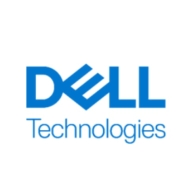

Dell RecoverPoint and Hitachi Thin Image Advanced compete in data protection and storage management. Dell appears to have better pricing and support, while Hitachi is preferred for its robust features.
Features: Dell RecoverPoint offers data replication, recovery capabilities, and disaster recovery solutions. Hitachi Thin Image Advanced provides efficient space usage, faster data access, and management. Dell focuses on recovery efficiency, whereas Hitachi emphasizes storage optimization.
Ease of Deployment and Customer Service: Dell RecoverPoint is known for straightforward deployment and reliable support. Hitachi Thin Image Advanced requires a more complex setup with detailed documentation and technical assistance. Dell holds an advantage in deployment, while Hitachi is strong in customer service.
Pricing and ROI: Dell RecoverPoint has a cost-effective initial setup and competitive pricing. Hitachi Thin Image Advanced has higher upfront costs but offers long-term value with its advanced features. The cost-benefit balance makes Hitachi a favorable choice for feature-focused returns.

Dell RecoverPoint provides continuous data protection with multiple recovery points to restore applications instantly to a specific point in time. It is used to protect applications with bidirectional synchronous and asynchronous replication and digital video recorder (DVR)-like recovery in physical, virtual, and cloud infrastructures.
Nondisruptively copy data within any Hitachi storage system or virtualized storage pool. Hitachi Thin Image snapshot software quickly creates copies for immediate use in decision support, software development and modern data protection operations.
We monitor all Data Replication reviews to prevent fraudulent reviews and keep review quality high. We do not post reviews by company employees or direct competitors. We validate each review for authenticity via cross-reference with LinkedIn, and personal follow-up with the reviewer when necessary.